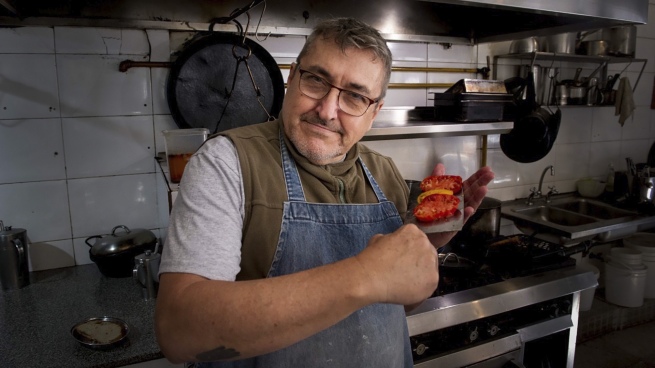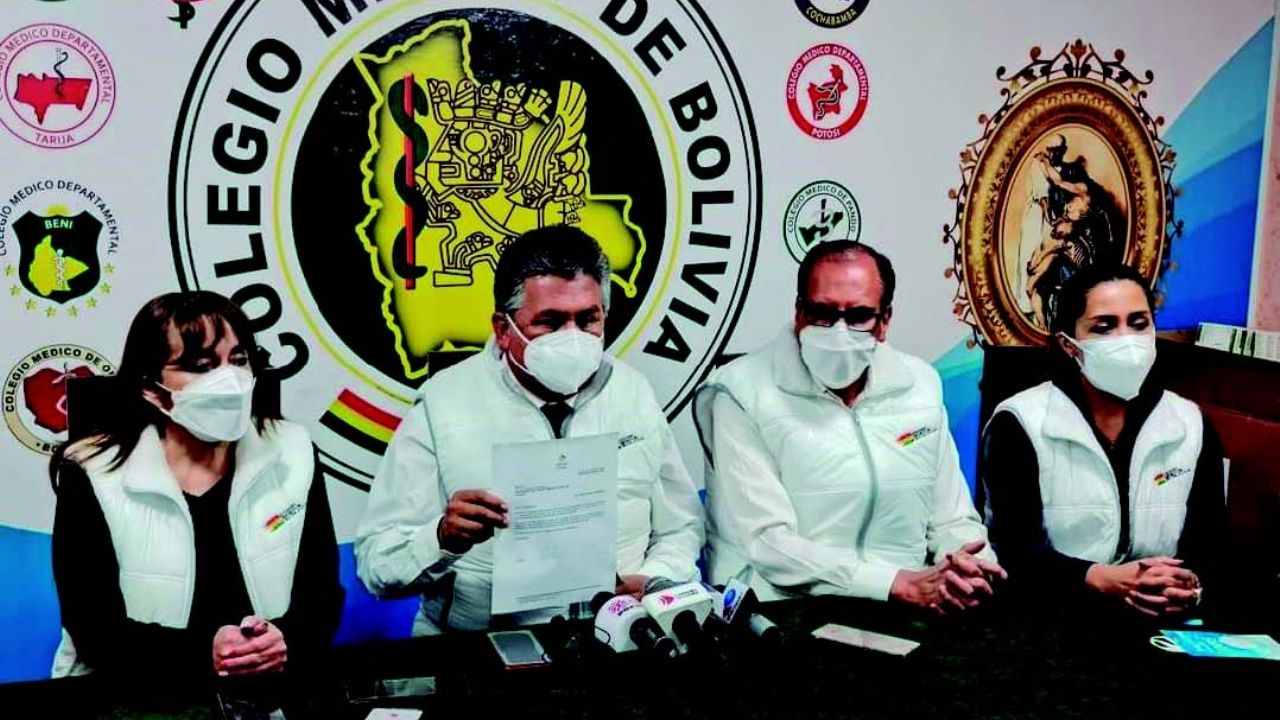Taste for good food, curiosity and commitment to what is cooked. Those seem to be the ingredients that do not appear in any recipe but are key when it comes to bringing the dish to the table, whether in a restaurant or at home. And those same keys are in the dishes that he has been preparing since 2003 Javier Urondo, chef with twenty years of experience and a horizon that updates a family commitment: to feed. Healthy, tasty, strong.
Dishes that are served in “Urondo Bar” (Beauchef 1204, Parque Chacabuco) and that now its creator decided to share in “The Imperfect Kitchen” (South American), a book where he shares ideas about gastronomy and recipes that, far from being rigid, represent “a concept”. It is that for the chef the good table is built recovering “the old recipes that were made at home”recycling “what is” in the fridge and using products made on a small scale and whose origin is as close as possible to pots and pans.
“The idea is what can be done with what is in the fridge and how creativity is summoned; everything can be recycled”, says Javier Urondo to Télam, at the same time that he proposes “Get the food pharmaceutical industry out of the way and pay more attention to products, to good meat, to good vegetables, to good fish, and not to all those packaged things that we see in supermarkets”.
Javier is part of a family tradition, one that feels passion and commitment for what he does. Son of the journalist, writer and militant Francisco “Paco” Urondo, assassinated in June 1976 by the military dictatorship.assures that “we have a fairly restricted diet for a country that produces a lot of food” and appeals “to traditions, to a way of cooking, to feeding not as a remedy but as fuel, as a restoration”.
flavors and textures
-Javier, from the title, otherwise suggestive, the book forces us to ask ourselves about the act of cooking. Is cooking imperfect?
-Basically, yes. Nothing we put on the plate is serialized. Each apple is different, each piece of meat too. Our concept is to get out of that search for perfection and make things from what exists, which is imperfect.
-There is a gastronomy marketing where the dishes seem more like an advertising product than something real, with their aromas, flavors and textures.
-Not all “pretty” dishes are tasty, nor are all “ugly” dishes ugly. There are dishes in which nothing happens visually but which are indisputably forceful in terms of taste and flavour. Then there is everything that the audiovisual and network culture exaggerates around the dishes, which can be very showy, but does not guarantee the taste of what you are going to eat.
-Is it possible to strike a balance between what a dish can present in visual terms and the rest of the senses that come into play at mealtime?
-We work with fairly rustic products, so we seek to make them visually attractive, calling to mind those abandoned products that we hope to recover. That the sacrifice makes sense, ultimately. Not only consume the loin but see what is done with all the animal that has been slaughtered. And also reinstall things that we have forgotten. For example, the brain, which today is far removed from Argentine cuisine but was able to be present in a lot of dishes from families of Italian and Spanish origin who came to the country. We try to make something rich and then think about the visual presentation, but not the other way around.
-The book brings your recipes, but you vindicate the old family formulas and the possibility of recycling what is in the refrigerator. How do you get along with both issues?
– The recipes are a concept guide. In the restaurant we are not very into recipes. In fact, we don’t remember the ones we did last year. The plate starts in one way and changes all the time. If a better vegetable appears, we add it and if there is another with difficulties, we replace it.
“In my kitchen we try to make something tasty and then think about the visual presentation, but not the other way around.”
-The same can be done at home…
-The idea is what can be done with what is in the refrigerator and how creativity is summoned; everything can be recycled. In the restaurant we learned a lot about Korean cuisine, for example. How do you recover what is left? There is a rice soup that uses the rice left in the wok to make another meal and, in turn, a digestive tea is made from the glob that remains. This is a concept that we use in our kitchen. Vegetables that are not to be eaten, we ferment them and make a compote, etc. As it was done in the houses before, where they made vinegar with the old wine, with the stale bread scratched bread, and so on.
Fats, flours and the bad press
-You state that you are interested in “people starting to rethink what they eat and give value to things that are good” What are those things?
-I believe that we are very contaminated by a sanitary discourse on food, which has become a kind of medicine. People talk about what is healthy, less healthy, and I instead think that food is a fuel, a restoration, and not a remedy. There are a lot of things, by the logic of the industry, that have been canceled over time. For example, when I was a boy, margarine appeared and canceled butter. Later the same thing happened with olive oil, replaced by industrial corn oil. Now there is talk of pestilence of flour and fat.
“We must pay more attention to good meat, good vegetables, good fish, and not all those packaged things that we see in supermarkets.”
-In fact, in the book you talk about fats and flours as “your friends”, something that sounds provocative today. Why?
-We make a claim for flour and fat because one thing is the gluten used by the industry as a stabilizer for dairy products and another thing is a bread pressed in the traditional way for twenty-four hours. That is the smoke bomb they throw: the flours are bad. And this is not so. What is bad is the indiscriminate use of gluten in food. Fats are not bad, what is bad is fat from solvent extraction of plant matter. Or everything that is used as a substitute for butter: margarines, fats mixed with margarines, etc. Putting everything in the same bag creates a lot of confusion.
-What do you have to pay attention to eat healthy?
-We have to get the food pharmaceutical industry out of the way and pay more attention to the products, to good meat, good vegetables, good fish, and not to all those packaged things that we see in supermarkets.
– Is it enough with what is in the neighborhood greengrocer or in the Chinese around the corner for good home cooking?
-We don’t have control of a lot of things. If the meat comes with 30,000 antibiotics or if the one who plants zucchini is next to a soybean plantation and everything is contaminated, it exceeds all of us. What I do believe is that what is closer to what we are going to consume is better. Between the crab that comes from Alaska and the crab from here, it is always better to eat ours. If you have a fruit and vegetable chain around the province of Buenos Aires, it is always better to eat what is in season and what is produced there. The closer to the producer you are always better. The problem is that the knowledge of what to eat in each season has been lost and that is something that we must recover.
Does this also influence food costs?
-The discussion about the price of food that we have now also has to do with all this, with the impossibility that each one has to eat things from small-scale production and not from large industries, of which we have less and less control as consumers.
Giving is giving (to eat)
-How does your family history, its culinary tradition, connect with the art of cooking?
-I don’t come from a gourmet family, I think I started with that tradition. I have a tour with a bit of literature and something more than drawing, audiovisual, music. The kitchen for me is part of all that. We have always been a family that liked to eat, something that is basic for any cook. And make you curious, of course.
“There are a lot of vegetables that we don’t eat. We have a pretty restricted diet for a country that produces a lot of food.”
Tips to make healthier and tastier bread
During the pandemic, homemade food became the attraction (and in many cases the necessity) of many households. When it came to cooking homemade bread, he was perhaps the main star. We ask Javier Urondo to reveal some secrets to continue kneading.
• The pandemic allowed home experiments with sourdough. But when bread is not made every day, the sourdough is not active, because it is made with a living element that, if it is dormant, does not activate. In turn, not all sourdoughs are powerful. So do not be scared when using commercial yeasts.
• Using long fermentations is the key to good bread. With just a little yeast you can make cold fermentations, placing the dough in the refrigerator. Do not let it go over 22 degrees.
• You have to give it at least twenty-four hours of fermentation.
• Bread made like this will be much easier to digest and much tastier.
-Your concern about what others eat, because it is eaten but also that it is made better, does it have to do with the story of Paco (Urondo, kidnapped and murdered during the last military dictatorship), with his militancy and commitment?
-Yes. Eating well is not more expensive, since packaged products are very expensive, they have a logistics and marketing cost that is perhaps higher than what is inside the bag. So eating well has to do with revaluing certain issues. For example, forgotten cuts of meat, as we did in the restaurant with the entrail center. But you have to do it right and you have lost the knowledge of how to clean a brain or cook liver etc. That technique, that knowledge, is something that we must also rescue.
-There is much to eat and much that is not eaten.
-There are a lot of vegetables that we don’t eat, for example. We have a fairly restricted diet for a country that produces a lot of food. And the other problem, even more serious, is the distortion generated by soybeans, which caused many things that were made in Argentina to be stopped, such as grass-fed meat, which is about to be lost. That is why we appeal to traditions, to a way of cooking, to giving food not as a remedy but as fuel, as a restoration.













